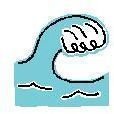7 Activities for Preschool Children Using Water
Purpose
Many activities for children using water exist in the preschool classroom. They can serve multiple functions. Water work is great as a
sensory experience. Activities can teach children how to control water for real life experiences. They can also be used to exercise those finger muscles, to enhance fine motor skills.
When setting up these activities always include a sponge for clean-up, and keep extra towels on hand. Insist the children wear plastic aprons to protect their clothing from being soaked. Also, make sure each child has extra clothes on hand for those “water fun” accidents. Provide an area that is protected by a non-slip bathmat and teach children how to clean up their spills. Demonstrate proper handling of the materials, and then allow the children to experiment with them.
Activities to Enhance Fine Motor Control
Children can exercise finger muscles and start learning life skills with these different water activities:
-
Squeezing a sponge - Have a bowl of water with a small sponge in it. Show the child how to simply pick up the sponge with both hands, and squeeze out all of the water. Drop it back in, and repeat. This serves as a great sensory experience, as well as teaching how to squeeze out a sponge to avoid drips.
-
Transferring water with a sponge - Use a sponge to transfer water from one bowl to another. Show the child how to pick up the sponge and let most of the water drip back into the bowl before moving to the other bowl. Squeeze the sponge into the second bowl, and then repeat the process until all of the water has been transferred. Then transfer the water from the second bowl back into the original. Further extensions of this activity include adding bowls or using a garlic press to squeeze out smaller pieces of sponge.
-
Transferring water with a baster - Use a turkey baster to transfer water from one container to another. Children can be introduced to this by simply practicing picking up and squeezing out water into one bowl, similar to the first sponge squeezing activity. For more precise control, try it with an eyedropper. Then use the eyedropper to place individual drops of water onto a soap dish (one with suction cups).
Practical Activities
Children’s water activities can continue to develop practical life skills:
-
Pouring water - Set up water pouring on a tray for independent practice. Start with pouring water from one vessel to another. Each vessel should have handles and be identical in size. Eventually use smaller vessels that have no handles or pour into multiple smaller ones. Put a funnel into a smaller necked container for even more precise pouring. Make it a practical experience by having a pitcher of drinking water available for the children to use to fill their own cups or water bottles when thirsty.
-
Using a strainer - Add objects to the water, such as plastic ice cubes, sequins, or beads. Place a strainer over the cup when pouring to catch the items. Return them to the water when pouring back into the original. Put these items into a bowl and use a slotted spoon to scoop them out.
-
Cleaning - Teach children how to use a sponge or scrubber brush to clean tables and chairs. Have them independently pour one pitcher of water into a tub or bowl with a drop of dish soap to create soapy water for cleaning. When finished cleaning, empty the water into the sink or a waste water bucket. Other fun cleaning activities can be washing a doll, scrubbing a small pumpkin or gourd, or other toys.
Making Bubbles
A perennial favorite water activity is making bubbles. Two great ways of doing this also provide great practical life skills.
-
Allow the child to use an eyedropper to put dish soap into a large bowl, then add one pitcher of water. Using a whisk, mix until bubbles climb high! Try out different styles of whisks. Also try using a rotary beater. It’s like mixing batter.
-
Have the children grate bars of a light soap, such as Ivory. (Use a plastic grater bowl with a lid, such as made by Tupperware, as metal graters can hurt little fingers). Then add a spoonful to the water. A rotary beater works the best for mixing the soap into bubbles.
Water activities are a great way to enhance fine motor skills, while also providing sensory and practical life experiences. When set up correctly, and properly monitored, they allow for great exploration and learning.
